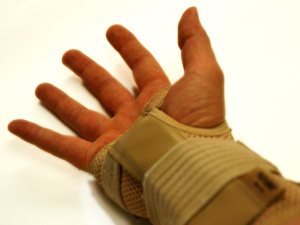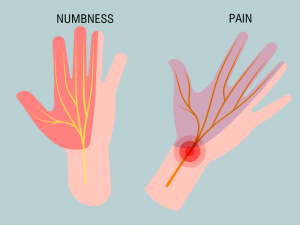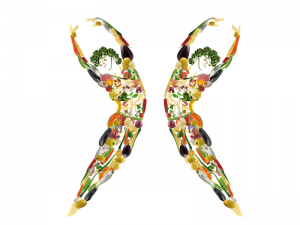Carpal Tunnel Syndrome (*) is a painful condition caused by compression of the Median nerve, which passes through a tunnel formed by the carpal bones of the wrist. This compression can occur due to repetitive hand movements or fluid retention.
The Median nerve controls the muscles responsible for thumb movement and transmits sensory information from the thumb, index, middle, and part of the ring finger. When compressed at the wrist, the nerve becomes irritated, leading to a variety of symptoms
* A syndrome is a group of signs and symptoms that together are characteristic or indicative of a particular disease or disorder.
Symptoms of Carpal Tunnel Syndrome
- Tingling, numbness, or pain in one or both hands, often affecting the thumb, index, middle, and part of the ring finger. However, discomfort may extend beyond these areas.
- Weakness in fine motor skills, such as writing or fastening buttons.
- Symptoms often worsen at night or in the morning but may improve with handshaking.
- Aggravated by repetitive movements of the hand or wrist.
- Swelling or inflammation of the wrist, often due to conditions like arthritis, can also contribute to symptoms.

Causes of Carpal Tunnel Syndrome
In some cases, the exact cause is unclear. Possible contributing factors include:
- Hormonal changes (e.g., pregnancy)
- Hypothyroidism (underactive thyroid)
- Diabetes
- Previous wrist fractures
- Arthritic changes in the wrist, primarily if associated with swelling
Getting a diagnosis
Typically involves:
- A detailed medical history
- A thorough physical examination of the wrist and hand
- Nerve tests to assess median nerve function
Additional signs may include:
- Muscle wasting at the base of the thumb
Altered sensation or numbness in the thumb, index, and middle fingers
Special Tests
- Tinel’s Test: Tapping over the median nerve at the wrist to check for tingling.
- Phalen’s Test: Bending the wrist downward (palm to forearm) for up to a minute to induce symptoms.
Treatment for Carpal Tunnel Syndrome
In many cases, CTS can improve with conservative treatments. However, if symptoms persist, surgery may be required.
Conservative Treatment Options:
Wrist splints:
- Resting splint: Often helpful if symptoms are worse at night.
- Working splint: Useful if specific activities worsen symptoms. It helps keep the wrist slightly extended to reduce pressure on the nerve.

Physical Therapy (Osteopathy/Physiotherapy):
- An osteopath or physiotherapist can recommend appropriate splints and exercises to prevent the median nerve from becoming restricted by nearby tendons.
Medication:
- Steroid injections: Provide short-term pain relief and may support rehabilitation efforts through physical therapy.
Surgery
If conservative treatments do not relieve symptoms, or if nerve compression is severe, surgery may be necessary. This procedure, typically performed under local anaesthetic as a day-case operation, aims to reduce pressure on the Median nerve and alleviate pain. While surgical outcomes are generally positive, as with all surgeries, complications can arise.
Important Note:This information is for guidance only and should not replace professional medical advice, diagnosis, or treatment from a qualified healthcare provider.








